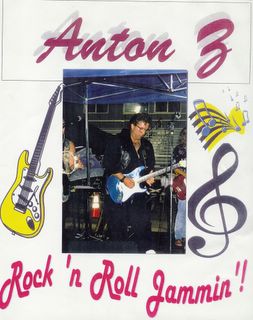The Importance of Good Working Space - FC
Here's a subject that has always been a pet project of mine - especially since Landmark Leadership Training starting back in the early '90's - spaces which are specifically designed to be "perfect" for the purpose to which they are designated. You know, whether it's office space, recreational space, cooking space, bathing, sleeping, etc. Many people criticize those of us who insist on having space that is appropriate for the task/non-task at hand (except of course in emergencies, but that is the exception not the general circumstances). Read on from one of my current favorite sources, Fast Company Blog - which is on a roll for me lately:
October 21, 2005
The Secret Power of Space - Posted by Tom Kelley
If you're a Set Designer at heart, you probably have people tell you that office space doesn't really matter. "People can work anywhere," they'll tell you. "Just give them a desk and a comfortable chair." Those skeptics a haven't discovered the secret power of space.
One of my favorite metaphors for the power of space comes from the world of baseball. Growing up in northeastern Ohio, my “hometown” team was—for better or worse—the Cleveland Indians. Throughout my childhood, all the way through my twenties and thirties, the Indians were one of the sorriest teams in American baseball. The Chicago Cubs admittedly had a worse win-loss record some years, but at least the Cubs were lovable. And when Hollywood was looking for a sad-sack team to lampoon in the comedy “Major League,” the Cleveland Indians were the team they chose.
But in 1994, the Cleveland Indians went through a remarkable transformation. As far as I know, they had the same coach and mostly the same players that year. They played in the same town, and drew from the same pool of fans. But there was one big catalyst for change in ’94: the stadium. The Indians finally moved out of the gigantic and drafty old Municipal Stadium on Lake Erie, where they had capacity for 80,000 fans, but often played to less than a tenth of that. Abandoning that aging behemoth, the Indians moved into the endearingly compact and airy 40,000-seat Jacobs Field, known locally as “The Jake.” It was built right in the heart of downtown—and was filled to capacity on game day for the first five years. Suddenly Cleveland’s “Bad News Bears” had, for most of that season, the best record in American baseball. As luck would have it, the 1994 baseball strike cancelled that year’s playoffs. But in 1995 for the first time in more than forty years, the Cleveland Indians won the pennant, disproving the widespread theory among many Ohioans that the Indians were waiting for hell to freeze over before they’d get to the playoffs.
If the Cleveland Indians’ transformation from one of baseball’s worst teams to one of the best was catalyzed by changing their stadium—by changing the working environment of their team—then maybe what your team needs, too, is a fresh stage to find its inner greatness. It doesn’t matter whether your talent resembles the hapless Cleveland Indians of my childhood or the perennially mighty New York Yankees. If simply redesigning your work environment would make your team more of a winner, who wouldn’t make the change?
And while the Cleveland Indians have had their ups and downs since then, they very nearly won the pennant again this year, and the stadium has generated a lot of civic pride in Cleveland. Jacobs Field has become a part of a larger sense of renewal (like the Say Yes to Cleveland program that just toured the Silicon Valley).
Smart Set Designers can make a difference.
Posted by Tom Kelley at October 21, 2005 07:25 PM
So, for those of you who thought I was wasting precious daylight by clearing space and organizing so I could work more effectively, maybe you understand my point, -- Now that we know . . . . Thanks, Mr. Kelley - jaz


0 Comments:
Post a Comment
<< Home